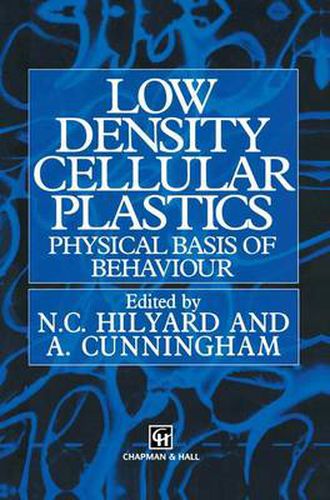Readings Newsletter
Become a Readings Member to make your shopping experience even easier.
Sign in or sign up for free!
You’re not far away from qualifying for FREE standard shipping within Australia
You’ve qualified for FREE standard shipping within Australia
The cart is loading…






This title is printed to order. This book may have been self-published. If so, we cannot guarantee the quality of the content. In the main most books will have gone through the editing process however some may not. We therefore suggest that you be aware of this before ordering this book. If in doubt check either the author or publisher’s details as we are unable to accept any returns unless they are faulty. Please contact us if you have any questions.
Foams are gas filled integral structures in which the gas is finely dispersed throughout acontinuouslyconnected solid phase. The bulk density is usually substantially lower than that of the solid component, and for the foams which form the focus for this book the volume fraction of the gas phase is considerably greater than 0.5 and in most instances in excess of 0.9. Many ofthe materials encountered in every day experience, such as bread, plants and trees, structural materials for buildings, comfort materials for domestic and automotive seating, shock absorbers or car bumpers and materials for noise control, have one thing in common - the cellular nature of their physical structure. Whyare thesestructuressoimportantin the naturaland man-made world? The reasons are both technical and commercial. From a technical viewpoint cellular materials offer: 1. high specific stiffness and strength - making them suitable for structural applications; 2. closeto idealenergymanagement - hencetheir useinthermalandacoustic insulation, vibration damping, acoustic absorption and shock mitigation; and 3. comfort - hence their use for domestic and automotive seating.
$9.00 standard shipping within Australia
FREE standard shipping within Australia for orders over $100.00
Express & International shipping calculated at checkout
This title is printed to order. This book may have been self-published. If so, we cannot guarantee the quality of the content. In the main most books will have gone through the editing process however some may not. We therefore suggest that you be aware of this before ordering this book. If in doubt check either the author or publisher’s details as we are unable to accept any returns unless they are faulty. Please contact us if you have any questions.
Foams are gas filled integral structures in which the gas is finely dispersed throughout acontinuouslyconnected solid phase. The bulk density is usually substantially lower than that of the solid component, and for the foams which form the focus for this book the volume fraction of the gas phase is considerably greater than 0.5 and in most instances in excess of 0.9. Many ofthe materials encountered in every day experience, such as bread, plants and trees, structural materials for buildings, comfort materials for domestic and automotive seating, shock absorbers or car bumpers and materials for noise control, have one thing in common - the cellular nature of their physical structure. Whyare thesestructuressoimportantin the naturaland man-made world? The reasons are both technical and commercial. From a technical viewpoint cellular materials offer: 1. high specific stiffness and strength - making them suitable for structural applications; 2. closeto idealenergymanagement - hencetheir useinthermalandacoustic insulation, vibration damping, acoustic absorption and shock mitigation; and 3. comfort - hence their use for domestic and automotive seating.